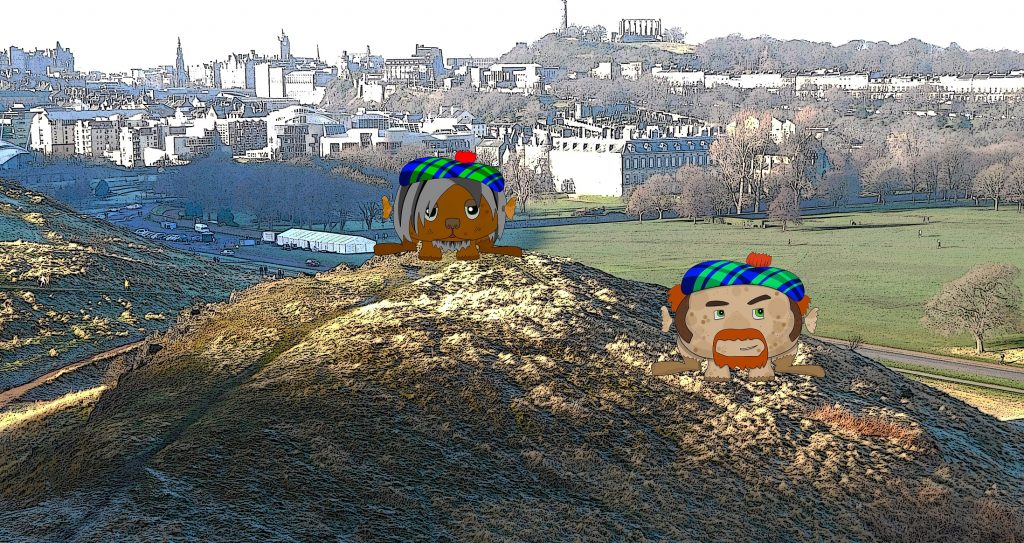In the shadow of Arthur’s Seat – Edinburgh’s resident volcano – lies Haggis Knowe, a small outcrop of ancient lava standing guard over St Margaret’s Loch.
The ‘haggis’ part of the name comes from the legend that this is where the haggis went into hiding after they were nearly hunted to extinction by Robert Burns in the 18th century.
Burns was a voracious haggis eater and was well known for his humane haggis hunting techniques. It is thought that he would lure them in with drams of Scotland’s finest whisky. This disoriented the wee creatures, making them easier to catch. Thankfully, it also somewhat anaesthetised them, allowing the hunting party to clobber them to death without causing any pain.
Well, not much pain anyway.
Before Burns’s discovery of this efficient haggis killing technique hunters employed the haggis’ worst enemy – the McPorrigeoat clan – to kill the haggis. They did this by drowning them in salt (just like we Scots do with a certain oaty breakfast dish). This led to haggis’ famously high salt content and the old Scots saying that “salt is the only spice”. It also led to a serious epidemic of deaths from heart attacks amongst the haggis hunters.
What many people think are ancient cultivation terraces on Haggis Knowe were actually created by haggis running around the hill. The word ‘Knowe’ comes from the Scots word meaning little round hill, or top of a hill. The word haggis is earlier, and has its roots in Edinburgh’s early medieval past as a Northumbrian stronghold. It comes from the old English word hugga, thought to have meant “small, vicious creature”: haggis are famously bad-tempered and unpredictable.
This story, of course, isn’t strictly true – everyone knows that the haggis really went into hiding around Schiehallion, the mountain closest to Scotland’s geographical centre. You could call it Scotland’s “Haggisy Heart”.
The tale above (well, the part about Haggis Knowe) was made up to confuse tourists, keeping them away from where the haggis have really been hiding. It’s also been known to bemuse our rangers. More than one has reported seeing a haggis out of the corner on their eye on the hill above St Margaret’s Loch, usually on a Monday morning, tired and bleary-eyed. Of course, they couldn’t really be seeing a real, live haggis, so close to the centre of Scotland’s capital – could they?
Use our Holyrood Park map to visit – let us know if you spot any haggis running about! And if you’ve already caught an unfortunate one, here’s the recipe to prepare it for Burn’s Night.
Illustrations by Maya Hoole.



